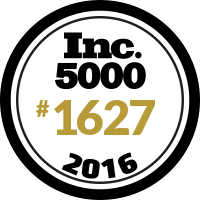PayNews: PayNW Ranks #1627 in 2016 Inc. 5000
PayNorthwest is proud to announce that it ranks #1627 in the 2016 Inc. 5000, an elite list of the fastest-growing private companies in the United...

The human resource (HR) function is one of the foundational pillars of an organization’s success. Employees are a company’s most valuable asset right at the heart of everything it undertakes – no employees means no management, no product development, no customer service, no sales and marketing. But to effectively attract, retain, manage, and motivate employees, a business must not only seek out HR leadership with a broad range of skills, such as business acumen, analytical skills, big-picture thinking, and highly developed people skills, it also needs to support that leadership with the adequate internal infrastructure that will enable them to deliver effective human capital management (HCM) across the organization – a very tall order indeed!
In my 20-year business career, I have sadly, more often than not, encountered HR as an under-resourced function due to varying degrees of value placed on the resource itself. When HR is in charge of delivering so much endless, yet vital paperwork and documentation (payroll, expense management, scheduling, onboarding, leave management, talent acquisition and management, benefits administration, time management, risk avoidance, etc.), how can it be expected to have the time to elevate its role and become an essential foundation of a company strategy? There just aren’t enough hours in the day.
To be able to break out of this vicious cycle, truly provide the foundational value it is expected to deliver, and receive the recognition it deserves, HR needs to have the right tools at its disposal. The good news is that the latest technological advances in cloud, mobile technology, platforms, and workflows give today’s HR leaders a real opportunity to make their mark and become better business partners by playing a much more strategic role within their own organizations when given real-time employee data to base their decisions on. Since employees are a key component of driving business results, it is important for companies to have a strategy that includes up-to-the-minute people data that can be tied to the business analytics strategy. And this is where HR process automation comes in. If a business invests in the right automated tools to streamline its HR processes, it will free up HR to become more impactful at both levels – tactical and strategic.
Implementing a suitable automated HR solution is no longer the sole privilege of large corporations. It doesn’t have to be complicated nor break the bank. As an HR Manager and Consultant, I have experienced the good, the bad, and the ugly when it comes to payroll, time attendance, and HRIS systems, and in that process, have found that not all HR solutions are created equal. Always make sure to ask yourself the right questions when preparing to embark on a system upgrade:
The bottom line is, your employees are your most valuable asset and they deserve to be managed effectively. When you invest in your HR department, you invest in your employees, and ultimately invest in the success of your business.
Learn more about what is HCM software, and how it can help by checking out this next post.
About the Author: Lynette Hatscher
Lynette Hatscher is CEO of Shared HR Services LLC, a human resources consulting company based in Seattle, Wash. and a member of PayNorthwest’s Referral Partner Network.
For more information on or to contact Lynette, please visit her LinkedIn page at https://www.linkedin.com/in/lynettehatscher.

PayNorthwest is proud to announce that it ranks #1627 in the 2016 Inc. 5000, an elite list of the fastest-growing private companies in the United...

Human Capital Management (HCM) is the set of processes related to your organization’s payroll, human resources (HR), time and attendance, scheduling,...

Being an expert in all areas of employment law is a daunting task. But it’s important for both new and experienced managers to have a basic...